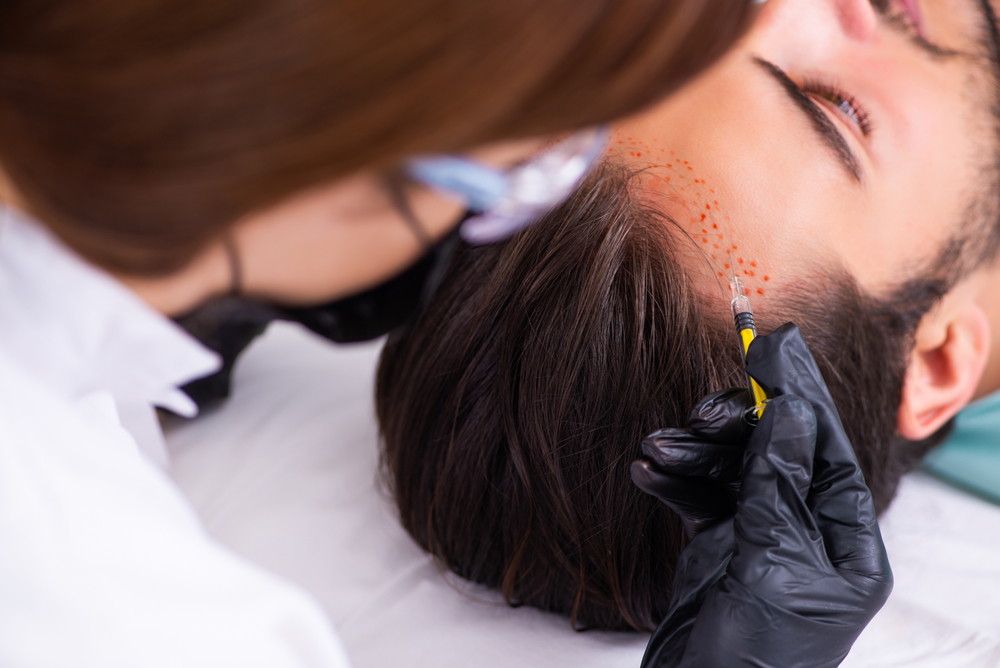Hair loss, a concern affecting millions worldwide, has long been the focus of scientific research and clinical studies. While current treatments have certainly made headway, the future holds promise for even more effective and tailored solutions. With rapid advancements in medical technology and understanding, what can we anticipate for the future of hair loss treatments? Explore this with Omnia Telehealth, your reliable health partner based in Spanish Fort, AL.
1. Advanced Hair Transplant Techniques
While hair transplantation isn’t new, the methods and technologies are constantly evolving. In the foreseeable future, we expect to see robotic-assisted hair transplants becoming mainstream. These precision-focused robots could reduce human error, ensuring grafts are placed optimally efficiently and accurately.
2. Stem Cell Therapy
Stem cells have garnered significant attention in the medical community for their regenerative properties. These versatile cells have the potential to differentiate into various specialized cells, opening doors to myriad therapeutic applications. Regarding hair loss, stem cell therapy aims to harness this regenerative potential to rejuvenate and regenerate dormant hair follicles. Preliminary studies have shown that stem cells can reawaken these inactive follicles, initiating the natural hair growth cycle. This groundbreaking approach targets the root cause of hair thinning and could provide a long-lasting solution for those battling hair loss.
3. JAK Inhibitors
Originally conceptualized for bone marrow disorders, Janus kinase (JAK) inhibitors have emerged as potential game-changers in the hair loss treatment landscape, particularly for conditions like alopecia areata. These inhibitors function by targeting specific cellular signaling pathways associated with hair growth. Preliminary studies and clinical trials have shown remarkable results, with significant hair regrowth observed in participants. As research deepens, JAK inhibitors promise to become a cornerstone treatment for certain types of hair loss.
4. 3D-Printed Hair Follicles
3D printing has already reshaped various medical fields, and hair restoration might be next on the list. Researchers are experimenting with creating biocompatible, 3D-printed hair follicles. These lab-grown follicles could potentially offer an endless supply for hair transplantation procedures, eliminating the need for donor sites and ensuring a perfect match every time. As the technology matures, 3D-printed hair follicles might drastically reduce the invasiveness and limitations of current hair transplant methods.
5. Personalized Treatments Using Genetic Insights
The shift towards personalized medicine has been transformative across various medical disciplines. By decoding an individual’s genetic makeup, healthcare providers can tailor treatments to address specific vulnerabilities and needs. In the realm of hair loss, genetic insights can be invaluable. Understanding one’s genetic predisposition to hair thinning, or identifying particular genes responsible for hair health, can pave the way for treatments that are fine-tuned to an individual’s genetic profile. This precision-driven approach promises not only enhanced efficacy but also reduced side effects, creating a win-win scenario for both patients and practitioners.
6. Enhanced Topical Formulations
While oral medications for hair loss exist, topical treatments remain popular due to reduced systemic side effects. The future may see improved formulations that increase absorption, ensuring that the active ingredients reach hair follicles more effectively. Such enhancements can increase the efficacy of treatments like minoxidil or other emerging compounds.
The Road Ahead: Hair loss, though common, can profoundly impact an individual’s self-esteem and quality of life. The journey towards finding the most effective treatments is laden with promise. Continuous research and technological advancements hint at a future where hair loss can be addressed with even greater precision and efficacy.
Steering Towards a Future of Fuller Hair with Omnia Telehealth
Keep abreast of the latest in hair loss treatments and technologies with Omnia Telehealth. Situated in Spanish Fort, AL, our telehealth services ensure you’re always informed and cared for, no matter where you are. Engage with us today for a future that promises a richer mane!
Sources
- Perez-Meza, D., et al. (2017). Hair follicle growth by stromal vascular fraction-enhanced adipose transplantation in baldness. Stem Cells Cloning. Retrieved from https://www.ncbi.nlm.nih.gov/pmc/articles/PMC5489741/
- Mackay-Wiggan, J., et al. (2016). Oral ruxolitinib induces hair regrowth in patients with moderate-to-severe alopecia areata. JCI Insight. Retrieved from https://insight.jci.org/articles/view/89790
- Fukuda, K., et al. (2018). The Hair Follicle Regeneration in a Mouse Model. Biomaterials. Retrieved from https://www.sciencedirect.com/science/article/pii/S0142961218300171?via%3Dihub.


